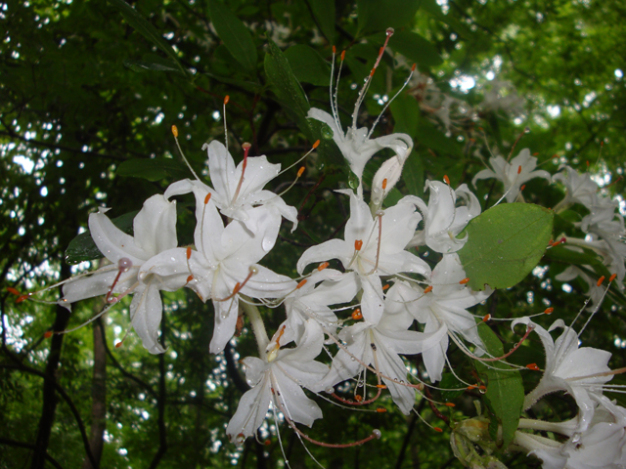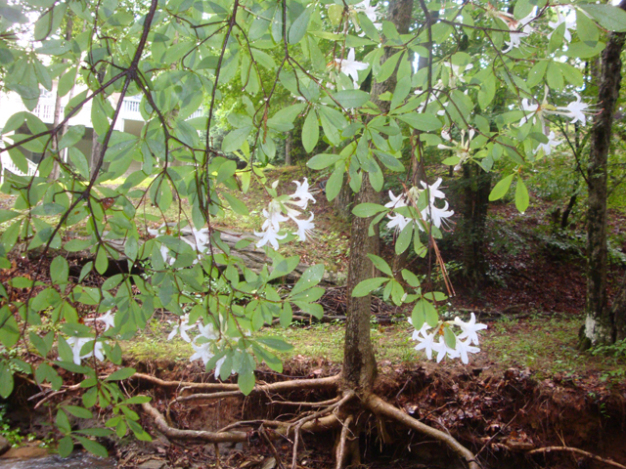
Common Name: Sweet Azalea, Smooth Azalea
Part sun to light shade; wet to medium moisture level; sandy or stony loams, deep loams, or silt loams; demands strongly acid to moderately acid pH.
5-10 feet height by 4-8 feet spread; blooms in early summer; white flowers with reddish or purple styles and stamens; fruits are hairy brown oblong capsules in late summer.
Growth Rate: Medium to slow; fast growing for a native azalea
Maintenance: Frequent disease and insect problems. Good cultural practices help reduce damage. Requires winter sun and wind protection. Use a yearly addition of organic mulch to retain moisture and reduce temperature fluctuations. Avoid application of fertilizers which tend to create fertilizer burns. Rhododendrons are sensitive to high levels of fertilizer salts.
Propagation: Seed germination code A. Moderately easy from seed. Seeds need to be mixed loosely into sphagnum moss and sprinkled lightly over a 2:1 perlite/peat mixture and germinated under a mist or in a plastic tent at 45-50 degrees F.
Native Region: Eastern half of Tennessee, primarily in Blue Ridge Province and Cumberland Plateau
Deciduous shrub that has a loosely branched, large, rounded form. Deliciously scented flowers with the odor of vanilla and jasmine. One of the hardiest native white azaleas. Name comes from the fact that the stems are very smooth and do not have hairs similar to other azaleas. Occurs naturally in swamp forests, mountain bogs, and on stream banks. Drought sensitive and has very shallow roots. All parts are poisonous to humans. Low wildlife value, with minor use by birds. Attracts bees. Cultivars available.

